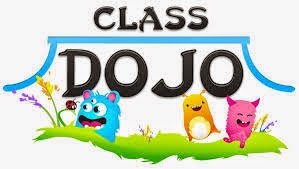I created this board to teach students about different environments or
ecosystems around the world. I wanted to provide them with an opportunity to
continue to develop their respectful and ethical minds through science by
learning about the world around them. The Discovery Education board that I
created meets one of my science standards as well as introduces another. It
will be a perfect starting point for students to work through either together
on our SMART Board or independently on computers or iPads.
Howard
Gardner describes the respectful mind as one that notes and welcomes
differences between individuals and groups, tries to understand others
and seeks to work with them. He also mentions that
the world is interlinked and that intolerance and disrespect should
no longer be an option as the respectful mind develops. Gardner then
explains that the ethical mind ponders the nature of one’s work, as well
as the needs and desires of the society that one lives in. When
developing the ethical mind, one works selflessly to improve all
(Gardner, p.3).
My board focuses on the characteristics animals and plants need in order
to survive in different environments. Students will first view a few short
video clips about plant and animal survival in environments. One of the clips
is about the deciduous forest, which is most similar to the environment in
which we live. While students are viewing the four clips, they will be taking
notes on characteristics plants and animals must have in order to survive, as
well as noting differences between the environments. This will allow for us to
have discussions based on their understandings as to how the environments
relate to human life and everyday living.
My goal, through the use of this board, is that students will be able to
recognize that our (all living things) resources are different depending on
which environment that we live in. However, based on what is provided and what
we can do to help ourselves, of course without harming nature, is living life
just they same as we do, it just may look a little different. I want my
students to look at places around the world with an open mind and not be judgmental
to how others are living, but to recognize their environment and see how they
are using their resources in order to survive and live a fulfilling life. As
Gardner says, “A truly respectful individual offers the benefit of the doubt to
all human beings” (Gardner, p.113).
I know as a fourth grade teacher that I am simply helping students build
the blocks that will be the foundation for their learning and understanding
through life. Through lessons like this and others, I hope my students will ask
themselves “What is the right thing for me to do?” (Gardner, p.144) as they are
“…all humans as part of a single community” (Gardner, p.120) including both all
living and non-living entities.
Resource:
Gardner, H. (2008). Five minds for the future. Boston, Mass.: Harvard Business Press.









